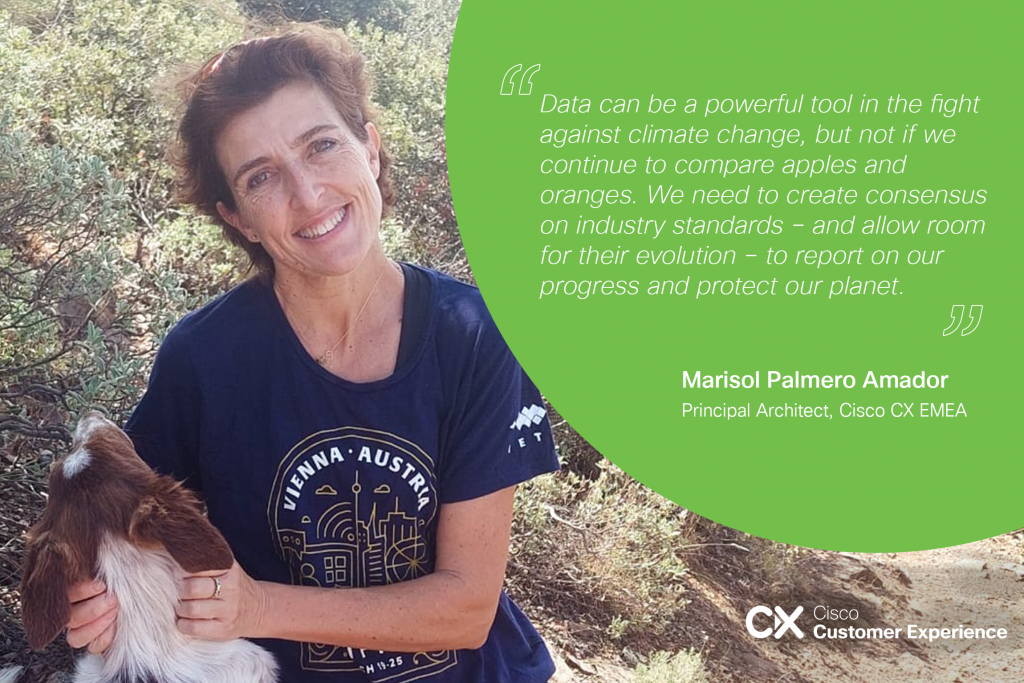
[ad_1]
In at this time’s world, there isn’t any scarcity of knowledge. So, you’d suppose that constructing a sustainable IT infrastructure is simple. Assume once more!
One of many greatest challenges[1] the sustainability neighborhood – technical and non-technical – is dealing with is the dearth of knowledge standardization.[2] With out requirements, we can not make significant information comparisons and we lack the power to observe, report, optimize, and constantly automate sustainability-related metrics. Merely put, with out standardization, we’re left evaluating apples and oranges!
As sustainability turns into more and more necessary to organizations, the standardization drawback turns into extra pressing. Knowledge should assist decision-making, efficiency monitoring, compliance, stakeholder engagement, and steady enchancment, enabling organizations to trace their progress and contribute to a extra sustainable future.
Including to the complexity, information sources concerned in sustainability are numerous. For each deployment that we do, these of us in technical roles want visibility past our personal expertise. We have to embrace: Provider information,[3] Authorities information,[4] Business information,[5] Third-party information.[6]
Whereas all that information permits organizations to determine inefficiencies, pinpoint alternatives for optimization, and determine patterns and tendencies, construction is required to show them into significant Key Efficiency Indicators (KPIs). There’s a needn’t solely to find out that are the proper information sources but in addition to outline the specifics of the semantics and models of measurement. We have to know evaluate these information sources and construct these metrics that can decide thresholds and alert us when situations are non-desirable.
You’ll ask me: Doesn’t measurement with out requirements nonetheless present some worth at a person group stage? Sure, nevertheless it turns into difficult to combination and evaluate information throughout organizations or sectors. It might additionally end in discrepancies and inconsistencies when reporting to stakeholders.
How can we allow organizations to report towards the identical metrics? How can we assist our prospects determine which resolution or vendor can assist their very own objectives? How can we construct belief with our prospects and brazenly share what and the way we’re performing as a part of their metrics?
We should learn to make our enhancements follow standardization.
Requirements and pointers present frameworks and methodologies aimed toward constant and correct measurement and reporting. They assist transparency and comparability amongst organizations. Some notable requirements and pointers in environmental sustainability embrace the Greenhouse Fuel Protocol (GHGP),[7] the International Reporting Initiative (GRI),[8] CDP (previously Carbon Disclosure Undertaking),[9] LEED (Management in Vitality and Environmental Design),[10] Environmental Administration Methods (EMS).[11]
The shortage of Standardization leads the {industry} to carry out a conservative evaluation, which in flip degrades the accuracy and consistency of the output, together with for reporting functions. Let me clarify why. The GHG Protocol offers necessities and steerage for corporations and different organizations to organize and publicly report a GHG emissions stock. Per these necessities, we estimate the emissions from the “scope 3, class 11: use of bought merchandise” class based mostly on the next formulation.
One of many key inputs above is the whole product lifetime, which is presently between 5 and 10 years for many distributors’ merchandise in our market. However, in the case of the electrical energy consumed by these merchandise – which is one other key enter – there may be room for huge variability based mostly on the extent of optimizations completed throughout deployment. Any small variance in how an organization calculates vitality utilization and product lifespans can change the whole reported worth drastically, making monitoring collective progress extraordinarily difficult within the absence of a normal, agreed-upon strategy.
To conclude, information generally is a highly effective device within the struggle towards local weather change, however not if we proceed to match apples and oranges. We have to create industry-wide consensus on information requirements – and permit room for his or her evolution – to report on our progress and shield our planet.
Notes
[1] It needs to be famous that the dearth of Main Knowledge (first-hand information gathered by the producer) is including to the problem. Whereas the {industry} is making progress on this area, in legacy environments typically the specs of each single part will not be recognized.
[2] Standardization is the method by which specs are set. Within the ICT sector, specs are primarily used to maximise interoperability – the power for techniques to work collectively.
[3] Info associated to circularity, and knowledge offered by suppliers and companions relating to environmental efficiency.
[4] Publicly out there information from authorities businesses, references from emissions inventories, and environmental databases.
[5] Particular to a specific {industry}, sector, or technical area. These are sometimes collected by analysis establishments, {industry} associations, and specialised corporations.
[6] Obtained from exterior sources. A transparent instance of a metric that wants third-party information is “carbon depth”. Carbon depth is a measure of how clear our electrical energy is. Particularly, what number of grams of carbon dioxide are launched to supply a kilowatt hour of electrical energy. Fossil fuels are very carbon intensive, whereas renewable vitality is low carbon. Carbon depth has a robust dependency, on location, time of the day, season, and electrical energy sources.
[7] Offers pointers for measuring and reporting GHG emissions.
[8] Framework for sustainability reporting, together with environmental indicators and metrics.
[9] Platform that collects and reviews environmental information from organizations.
[10] Certification system for sustainable constructing design and building.
[11] Requirements comparable to ISO 14001 present a framework for managing and enhancing environmental efficiency.
Share:
[ad_2]

